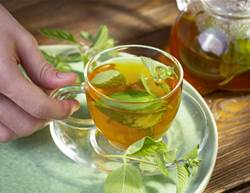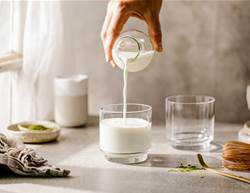If you're like many people who experience intense fear at even the sight of a cockroach, you may shudder to hear the latest "superfood" everyone is talking about: cockroach milk.
Just so you have the complete, horrifying picture: A particular breed of cockroach native to Hawaii-the female Pacific beetle-actually gives birth to a breed of 50 or so live young, who then feed on a pale, yellow "milk" in the form of crystals from her brood sack, according to NPR. The discovery first gained attention in 2016 when a study found that cockroach "milk" was packed with nutritional benefits.
"The crystals are like a complete food-they have proteins, fats and sugars. If you look into the protein sequences, they have all the essential amino acids," researcher Sanchari Banerjee said in 2016, as reported by Time. The team found that a single crystal provided three times the energy that the same amount of dairy milk does.
A South African company has already seized the opportunity to create bug milk ice cream, in case you've ever felt a need for that in your life. Their alternative milk product, Entomilk, comes from the term "entomophagy," the practice of eating insects. The company is promoting bug milk ice cream as an environmentally friendly alternative to traditional dairy farming and says it's high in protein and minerals like iron, zinc and calcium. The ice cream even comes in three flavours: peanut butter, chocolate, and chai.
Should humans actually consume bug milk?
The idea of eating insects as a more sustainable solution for the population's protein needs has been around for a long time, with some passionate advocates within the scientific community. But when it comes to cockroach milk, more research is needed-as of now, there's no scientific proof that this "milk" is safe for people.
"When we drink milk from cows, it goes through pasteurization for safety. I question the safety of cockroach milk for human consumption," says dietitian Keri Gans.
While high in protein, the milk crystals are also high in kilojoules. "It supposedly has three times the energy of milk-well, energy is kilojoules, and I don’t know why we need three times the kilojoules of milk," says Gans. "One cup of whole milk is 630kJs. I think that’s high enough. I wouldn’t want someone drinking a cup of cockroach milk that’s three times the kilojoules of that."
There are other drawbacks for cockroach milk enthusiasts. First, Hawaii's Pacific beetle is the only species known to produce these milk crystals. Plus, the process of "milking" a cockroach is a bit tricky, as you might imagine, and kills the insect in the process, which Inverse has described as "neither feasible nor efficient." Finally, it takes a lot more cockroaches to produce a significant amount of milk than it does from a cow-study co-author Leonard Chavas estimated you'd have to kill around 1,000 cockroaches to produce just 100 grams of milk, which isn't exactly ideal for mass-market distribution.
"I’m all for products that are sustainable, but you get such a little amount of milk from one cockroach," says Gans. "What’s the likelihood we’re going to get enough to fill a cup of milk? Some are trying to genetically engineer it, which I’m all for-if we actually needed it."
A well-balanced diet will already provide enough protein for the average person, and those looking for non-dairy milk options would be better off with soy milk or almond milk, she says. "As of now, if a patient wanted to try cockroach milk, I would want them to re-think it," says Gans.



.jpg&h=90&w=90&c=1&s=1)



.jpg&h=193&w=250&c=1&s=1)


